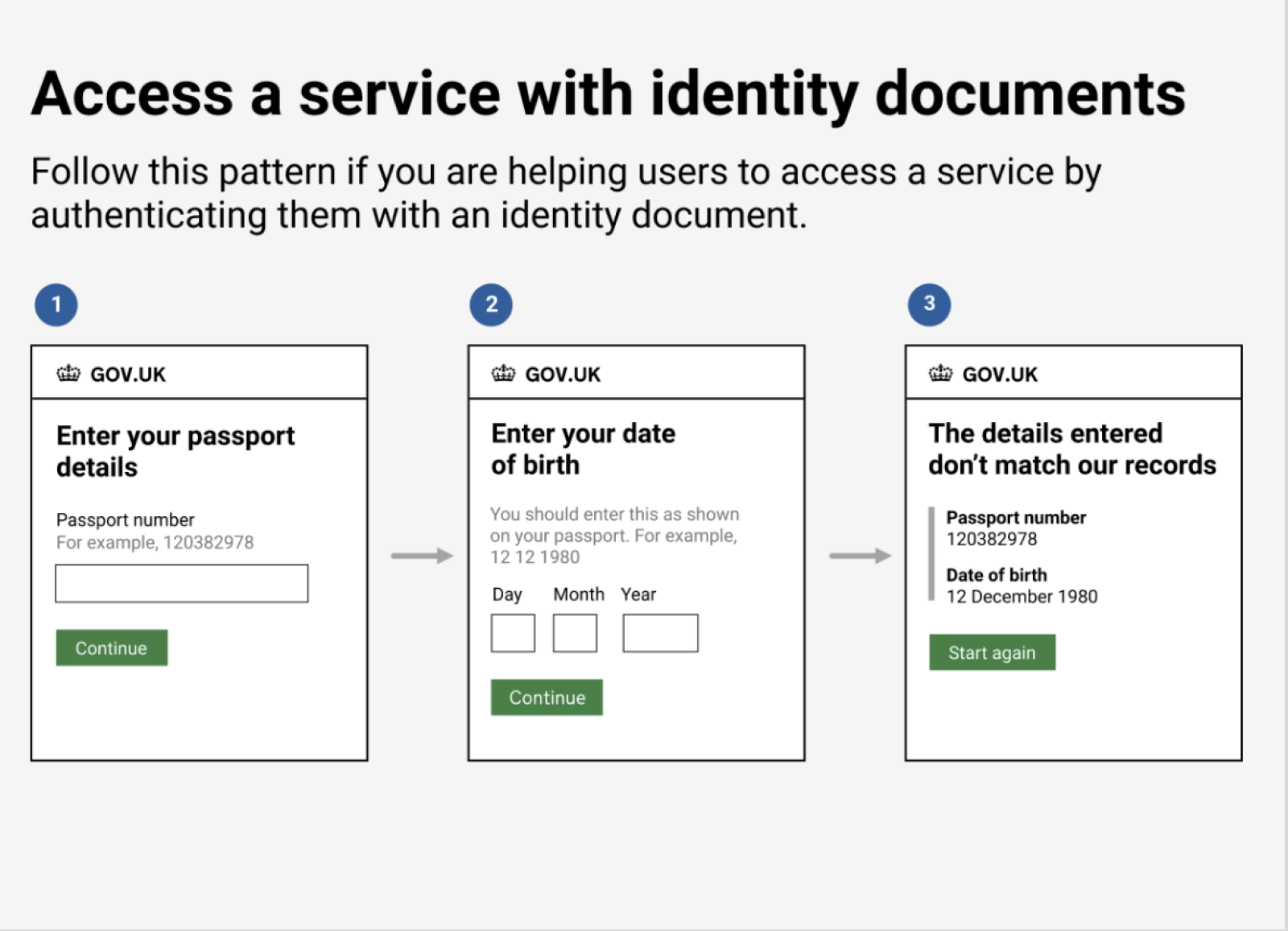Managing a government design system
Home Office
February 2019 - June 2021
I set up a design system steering group, performed general maintenance on the system and built an alternative working prototyping tool to explore how designers and developers could work more closely together and create a consistent and more accessible service.
 A diagram showing an example of a pattern from the design system.
A diagram showing an example of a pattern from the design system.
Background
The GOV.UK design system provides reusable components and patterns for designing UK government services consistently. The Home Office design system supplements this by providing more specific guidance for internal and public-facing Home Office services. As part of my role in DesignOps, I helped manage the Home Office design system.
Challenge
With the growing number of designers coming in to design and build new services and products across various portfolios of work, the design system becomes an increasingly critical tool for designing and building consistently and accessibly. It is also an important platform where others can share ideas and common problems for collaboration. How do we go about maintaining the system as well as encouraging contributions from the community? Furthermore, how can we make the design system useful and address the community needs?
The design system steering group
The design system could not be managed alone. Working closely with a core team of designers, researchers, software engineers and accessibility consultants, I set up a monthly cadence for the steering group to meet so we could discuss various topics: from ways of encouraging the community to feed into the backlog of issues to establishing a process for reviewing incoming components and patterns for publication.
Joining up design and development with shared tools
The design system shows how components and patterns are styled, for designing and prototyping, but sometimes what gets built in the end may not be represented consistently or accessibly.
Working with the principal software engineer of our steering group, I wanted to explore building an alternative prototype to the GOV.UK prototyping kit which would enable designers to pass the prototype to developers as a basis for building upon, rather than starting from scratch, as the prototype would have a solid foundation to build from. Given many services are built differently, this was an attempt to render the build consistently, accessibly and efficiently while also getting designers, developers and their delivery team to work more collaboratively.
The prototype is for a mock service and contains common Home Office components and patterns to help designers who wish to use it for their services.
- Links:
- View the Home Office design system
- View the prototype in GitHub
- Design system, community collaboration, team working, prototyping